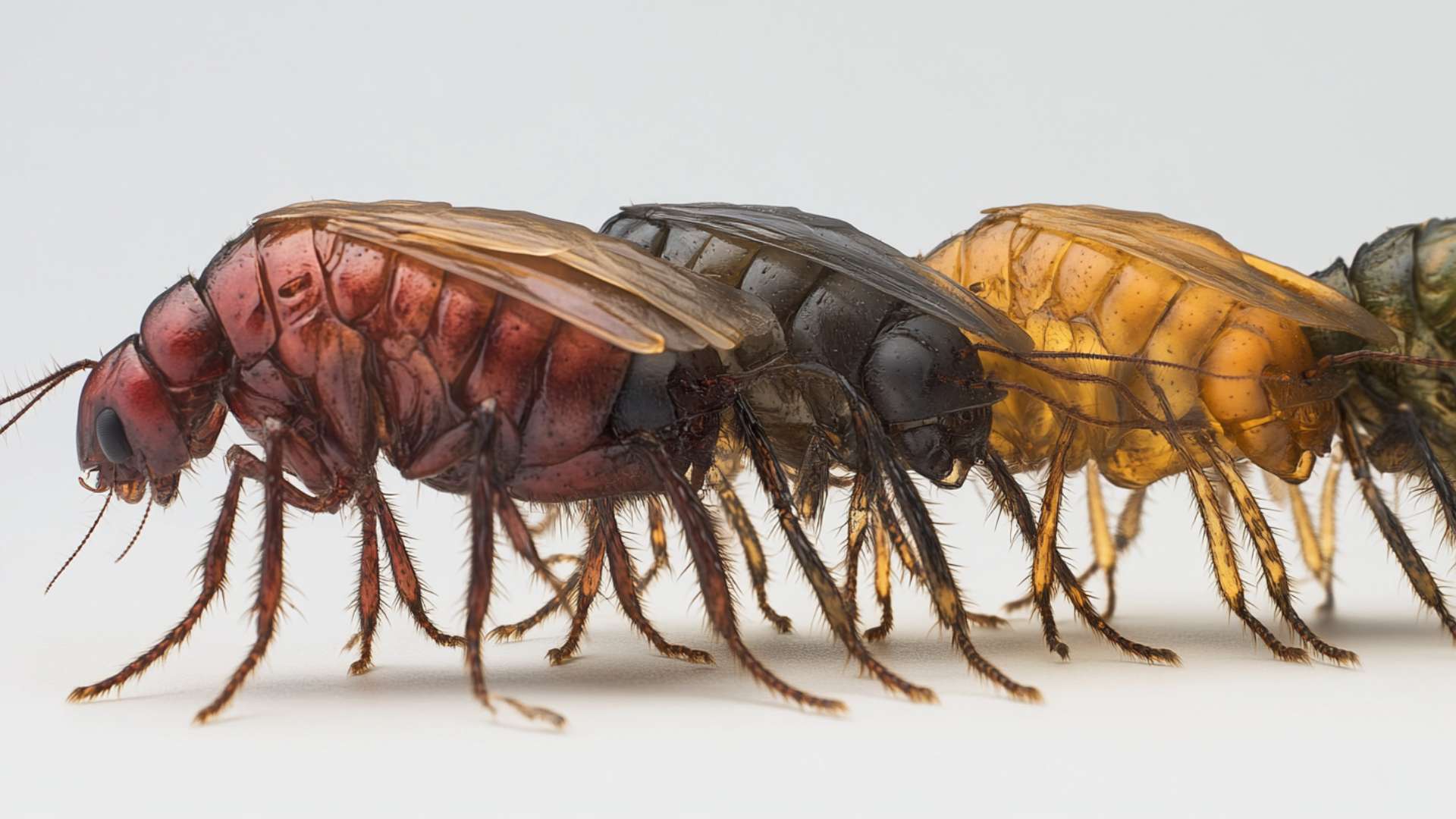Creating a safe, inviting outdoor living space is a goal shared by many homeowners, whether it’s a cozy patio for morning coffee, a weekend barbecue area, or a quiet retreat under the stars. However, what often goes unnoticed is the presence of one of the most persistent and underestimated threats to these spaces: fleas. These tiny, elusive insects aren’t just an issue for pet owners; they can quickly infest even the most well-kept yards, hiding in shaded corners and thriving in humid environments. As outdoor living becomes more integral to our daily routines, understanding how fleas infiltrate these spaces and the dangers they pose is essential.
From spotting early warning signs to implementing practical prevention strategies and knowing when to call in professionals, this guide explores how to reclaim your outdoor areas and enjoy them flea-free all season long.

Table of Contents
- 1 Recognizing the Threat: How Fleas Invade Outdoor Spaces
- 2 The Hidden Dangers of Flea Infestations Outside
- 3 Flea Habitats: Why Patios Are Prime Targets
- 4 Early Warning Signs: Spotting Fleas on Your Patio
- 5 The Benefits of Proactive Flea Control for Outdoor Spaces
- 6 Practical Flea Prevention and Control Methods for Patios
- 7 Creating a Comprehensive Flea Management Plan
- 8 Working with Professionals: When DIY Isn’t Enough
- 9 Building a Healthier Environment: Long-Term Benefits
Recognizing the Threat: How Fleas Invade Outdoor Spaces
Fleas are persistent pests, known for their ability to quickly multiply and establish themselves in outdoor spaces that may seem well-maintained to the untrained eye. While many associate flea problems with untidy environments or households with pets, these tiny insects are remarkably agile and resourceful. Patios, often used for family gatherings and lounging, can become the target of an invasion without warning. Since fleas thrive in warm, humid microclimates, features that bring comfort—such as patio rugs, shaded lounge areas, and even potted plants—can inadvertently also entice fleas to settle in.
Pets who spend time both inside and outside frequently serve as unwitting hosts, transporting fleas from walks in the neighborhood or romps through tall grass directly to your outdoor entertaining space. But even homes without animals are at risk, as local wildlife like squirrels and raccoons may drop flea eggs and larvae as they traverse your yard at night. Recognizing these risks is key. Tackling flea control in Weymouth and comparable areas prevents flea populations from taking hold, ensuring outdoor living remains enjoyable and hygienic. The earlier you address these external threats, the less likely it becomes for fleas to migrate indoors and become entrenched within the household.
The Hidden Dangers of Flea Infestations Outside
Beyond the immediate discomfort of itchy bites, fleas pose several hidden dangers that can significantly impact your family and pets. While most people notice the nuisance aspect first, such as pets scratching excessively or irritation after sitting outside, the medical risks posed by fleas are significant and should not be underestimated. Fleas are proven carriers of several pathogens; they can transmit murine typhus, facilitate the spread of tapeworms in pets, and cause allergic reactions that go far beyond simple skin irritation. Unbeknownst to many, people with sensitive immune systems or preexisting allergies are at greater risk of flea allergy dermatitis, which can make life miserable during the warmer months.
Young children and older family members are particularly vulnerable to the complications that can stem from these diseases. What many homeowners don’t realize is that failure to control fleas on patios can lead to a recurring cycle: pets pick up fleas outside, bring them indoors, get treated, and then become reinfested the very next time they set foot on the patio. This is why seeking professional pest control in Weymouth can be such a critical step. By addressing fleas at their outdoor origin, you disrupt this cycle, reduce health risks, and minimize potential future medical expenses.
Flea Habitats: Why Patios Are Prime Targets
Patios are appealing targets for fleas due to several environmental factors. Unlike open, sun-baked lawns, patios tend to provide ample shade and shelter, two qualities fleas need to survive. Organic matter, such as mulch, fallen leaves, and even small piles of debris, becomes a humid sanctuary for fleas to lay eggs and for larvae to mature, hidden from predators and the sun. Sometimes, the spaces beneath patio furniture or along the borders of planters are ideal breeding grounds, especially if pets frequently snooze or play in those cool nooks.
In neighborhoods where wildlife is common, patios can become unwitting crossroads for hosts carrying fleas, even if the immediate household has no pets at all. For example, a neighbor’s cat or a stray raccoon wandering through overnight can leave behind a trail of flea eggs, which can hatch in days and soon blossom into a significant problem. Proper awareness and proactive habits—such as promptly removing yard waste and regularly inspecting out-of-the-way corners—will reduce these hidden attractants and help keep your outdoor space flea-free.
Early Warning Signs: Spotting Fleas on Your Patio
Fleas are masters of concealment; their diminutive size and preference for lurking in damp, dark crevices make them hard to spot until the infestation is well underway. Yet, with a careful eye and regular inspections, sure telltale signs can alert homeowners to potential problems before they become overwhelming. One strong indicator is noticing pets itching, biting, or scratching themselves much more after being outside than usual. Flea dirt—tiny, pepper-like black specks—can accumulate on outdoor cushions, patio rugs, or pet bedding left outdoors.
Occasionally, people who wear light-colored socks and walk across shaded patio areas may notice fleas jumping onto their feet or ankles. To ensure early intervention, establish a habit of checking under outdoor furniture, examining between paver cracks, and keeping an eye on any area your pets frequent while outside. When these early warning signs are recognized and acted upon promptly, you can avoid the need for drastic and costly remediation efforts later on.
The Benefits of Proactive Flea Control for Outdoor Spaces
Staying ahead of flea problems offers several significant benefits that extend well beyond simple comfort. A proactive approach means families can relax on patios, host guests, and allow pets outside without constant worry of encounters with biting pests. This preventive mindset not only reduces uncomfortable flea bites but can also substantially lower the chances of indoor infestations, which are often much more complex and more expensive to eradicate.
Furthermore, research outlined in prominent public health and pest management studies confirms that integrated outdoor flea control leads to better health outcomes for both humans and animals. Preemptively addressing fleas in outdoor environments means minimizing allergic reactions and disease risks—a critical consideration for families with young children, elderly relatives, or pets with sensitive skin. More broadly, a well-maintained, flea-free patio can increase neighborhood health, as fleas are less likely to travel between homes in tightly knit communities.
- Reduces indoor pest infestations and related costs
- Promotes more enjoyable, stress-free outdoor living
- Protects vulnerable family members and pets from allergic or severe reactions
- Supports community-wide health and well-being
Practical Flea Prevention and Control Methods for Patios
Fortunately, creating a flea-free patio doesn’t require resorting to harsh chemicals. Several practical steps, based on integrated pest management, can dramatically decrease flea pressure around patios. Start by keeping the area meticulously clean: remove leaf litter, grass clippings, and decaying wood, since all these can provide fertile breeding grounds for fleas to complete their life cycle.
- Yard and patio maintenance: Consistently trim shrubs and keep grass at a manageable height. This allows sunlight to reach the ground, making the environment far less attractive to moisture-loving fleas.
- Pet care: Be diligent with vet-approved flea treatments and ensure outdoor bedding is washed in hot water frequently. Clean up pet droppings to avoid attracting other wildlife that may host fleas.
- Natural options: Using beneficial nematodes, diatomaceous earth, or cedar mulch in garden beds around the patio can provide safe, eco-friendly deterrents.
- Power washing and sweeping: Regularly sweep hard surfaces and occasionally power wash patios to break up debris in which fleas and their larvae might hide.
- Limit wildlife access: Seal up gaps and cover trash cans to prevent wild animals from wandering onto your property and contributing to flea populations.
By combining these actions and assessing your patio’s specific needs, you can design a robust, customized flea prevention plan that lasts throughout the flea season.
Creating a Comprehensive Flea Management Plan
The most reliable way to prevent recurring flea issues is to have a long-term management strategy. Start with a thorough spring clean: sweep away all debris, mow the lawn, and rinse hard surfaces. As summer arrives and flea activity increases, inspect your patio area and all pet resting spots at least once a week and deep clean monthly if you notice excess moisture. Address drainage problems immediately, as standing water encourages flea reproduction. According to the University of California’s Integrated Pest Management guidelines, it’s also essential to thoroughly and regularly clean areas where pets rest—doing so helps eliminate flea eggs, larvae, and adults before they can multiply.
- Weekly inspections in late spring and summer
- Monthly thorough cleaning of hard-to-reach areas
- Frequent washing of pet bedding in hot water
- Seasonal vet visits for updated flea prevention solutions
Scheduling these simple but effective tasks throughout the year greatly increases your defense against persistent flea problems and ensures your outdoor spaces remain safe for everyone.
Working with Professionals: When DIY Isn’t Enough
Although many flea problems can be handled with vigilance and regular care, some infestations prove stubborn and require expert help. If your pets continually pick up fleas or you find signs of fleas indoors even after cleaning, it’s time to contact a pest control specialist. Professionals conduct thorough property assessments, identify hidden sources of fleas, and apply more targeted and lasting treatments than are available over the counter.
Investing in a professional partnership comes with added benefits, such as access to follow-up services and educational resources that can help you maintain a flea-free home and patio in the future. This route is especially recommended for households with recurring issues, multiple pets, or residents with health conditions that could be worsened by repeated flea exposure.
Building a Healthier Environment: Long-Term Benefits
The long-term rewards of proper flea control stretch far beyond the absence of pests. By keeping patios and outdoor living areas free from fleas, homes become safer, healthier, and more enjoyable for everyone in the household. These efforts also reduce the risk of reinfestation in your neighborhood and protect everyone’s pets and children.
Consistent, proactive flea management is a straightforward way to create a comfortable and worry-free environment where families and friends can relax outside, garden, or entertain—without the threat of pests. Adopting these steps not only enhances outdoor living but also strengthens the collective health and well-being of the wider community.


